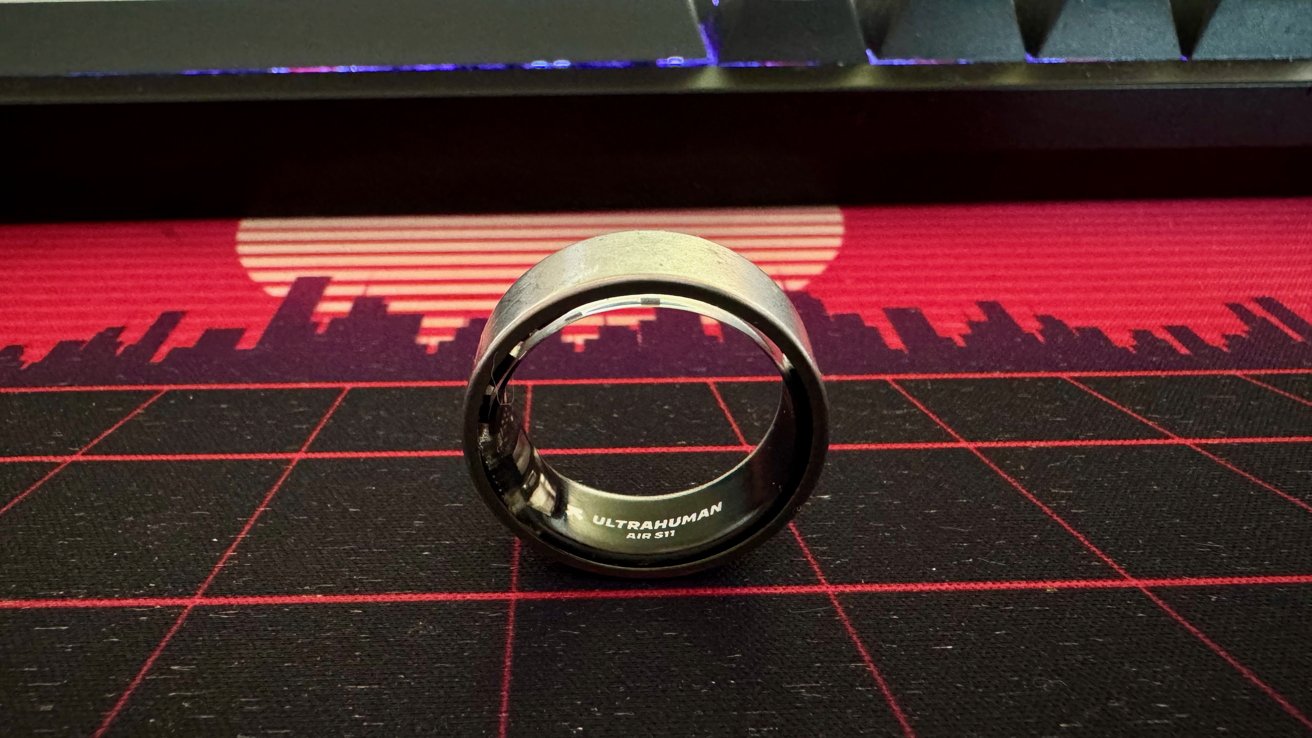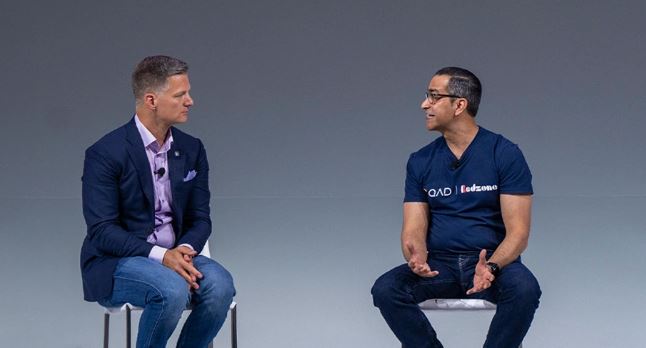The world of the smart ring is a relatively new one, especially when compared to smartwatches.
Are smart rings the answer for people who don’t want to wear a smartwatch? They’re definitely better than wearing nothing, of that I’ve no doubt.
To that end, I’ve been wearing an Apple Watch Series 10 for a few months. I also wear an Oura Ring 3, so the idea of putting the Ring Air through its paces intrigued me.
The Ring Air has now been on my finger for the last few weeks. It’s tracked my sleep and my dog walks, and it’s done it well.
It’s given me insights into the way my body reacts to bad and good sleep, among other things. And it’s done it while being surprisingly unobtrusive.
The Ring Air isn’t any cheaper than an Apple Watch, and neither is its competition. But, after living with it for a while, I don’t think I’d want to be without it.
UltraHuman Ring Air review: Spoiled for (im)perfect choice
The UltraHuman does have competition with the Oura Ring 4 and Samsung Galaxy Ring the main players. Others are on the way, and rumors of an Apple Ring surface every so often, too.
Whether or not Apple decides to risk eating into Apple Watch sales with a smart ring remains to be seen. And if you can’t wait to find out, today’s options are more than capable of doing a job.
That isn’t to say they don’t have their limitations, of course. Battery life can be an issue, especially after years of use.
Then there are the obvious issues. You can’t tell the time with a smart ring and there are no notifications, either.
But for some people, those limitations are actually features, things that make a ring preferable. If that sounds like you, read on, as the UltraHuman Ring Air might just be for you.
UltraHuman Ring Air review: What can it do?
If you’re in the market for something like a smart ring you probably already have some expectations. In all likelihood, the Ring Air will meet them.
All of the features we’ve come to expect from a fitness tracker are present. Those include the ability to monitor your heart rate as well as your skin temperature, to start.
Then there’s a blood oxygen sensor as well, something the Apple Watch can’t boast anymore. Not when sold in the United States, at least.
You’ll connect your smart ring to your phone using the magic of Bluetooth, but there’s no GPS or Wi-Fi — not that you really need it.
None of that sounds all that impressive, but the sensors and radios don’t tell the full story. What matters is what UltraHuman does with the data it collects.
The UltraHuman app turns that data into handy features including AFib detection (via subscription). It tracks your cardio adaptability, or how your heart reacts to stress and activities.
The app also calculates your circadian rhythm so it can tell you when to drink caffeine, when to sleep, and more. It’ll even tell you how much vitamin D you get, and that it probably isn’t enough.
You’ll of course also get step tracking, information on calories burned, and how far you’ve moved. VO2 Max monitoring uses the blood oxygen sensor to offer insights into your cardiovascular health.
The features keep on coming with sleep tracking and sleep stage monitoring included. The ring can even tell you how stressed you are, and when. It’s all interesting stuff.
Women’s health is thankfully also catered for, with cycle and ovulation tracking available. You’ll even get pregnancy insights into how your health affects your baby.
I haven’t gone in-depth here, either. Each of those paragraphs could have been four. There’s just so much going on in the UltraHuman app.
If you’re someone who likes to collect data and then use it to learn about your body, you’re golden.
I also like how the UltraHuman app tells you what all of this data means, too. I’ve used other rings that give you the information and leave you to it. I much prefer UltraHuman’s approach.
Like all good smart wearables, the Ring Air syncs its data with the Apple Health app, and vice-versa. Why this isn’t a given in 2025, I’ll never understand.
UltraHuman Ring Air review: The hardware
You’ll need to wear the Ring Air essentially 24/7 to get the best out of it. The water-resistant build means you can, too.
Like any other ring, UltraHuman’s tracker needs to look and feel good on the finger. And I have good news.
Thankfully, it does. I’ve been wearing one on my index finger for a few weeks now, and I forget it’s there.
That’s likely thanks to its svelte construction. At just 2.4-3.6 grams it’s almost half the weight of an Oura Ring.
You’ll get the choice of five colors when you order your Ring Air with a mixture of matte and shiny finishes. Raw titanium (the one I have) and Matte Gray are the flat colors, Aster Black, Bionic Gold, and Space Silver, are the shiny ones.
As for sizes, the Ring Air comes in plenty and you’ll get a free sizing kit to make sure you order the right one. Wear the dummy ring for a couple of days to make sure it fits before ordering.
The UltraHuman Ring Air comes with a charger and cable in the box, though there’s no AC brick. Sliding the ring onto the charger is enough to start the powering process — 180 minutes gets you to 100%.
As for how long that charge lasts, that’s a matter of debate. UltraHuman says up to six days, and I do get around a week from mine.
But that drops significantly if you track workouts because the sensors will be used more. A search of social media suggests battery life has been an issue in the past.
Thankfully, recent firmware updates seem to have improved matters somewhat. How that little battery will last after a few years of recharging, I can’t say.
UltraHuman Ring Air review: Let’s talk money
So if by now you’re sold on the UltraHuman Ring Air, you’re probably wondering how much it costs. Well, you’ll be disappointed if you want a cheap alternative to an Apple Watch.
At the time of writing this review, the Ring Air sells for $349, which is almost Apple Watch Series 10 money. It’s $100 more than you’d pay for the smallest Apple Watch SE.
It isn’t the option for bargain hunters, sure. But there are no subscriptions for the base features, at least. And the optional subs are only a few dollars a month.
UltraHuman Ring Air review: Conclusion
But none of this matters because you’re unlikely to buy a smart ring to save money. Most likely, you’re buying it because you want 80% of the Apple Watch experience without a watch.
Whether you don’t like wearing anything on your wrist, or you’re all about mechanical watches instead, the Ring Air is here. It’ll keep tabs on your heart, your health, your activity levels, and more.
It’ll collect as much data as it can and turn it into useful graphs and information. And then it’ll tell you what that actually means, something Apple’s Health app could learn from.
Is the UltraHuman Ring Air perfect? No, there are concerns over battery health after years of use, for starters.
UltraHuman Ring Air: Pros
- Fitness and health monitoring on your finger
- An unobtrusive design
- Long-lasting battery life
- The UltraHuman app gives you useful information
- Plenty of color and sizing options
- No subscription required
UltraHuman Ring Air: Cons
- More costly than some might expect
- Concerns over battery health longevity
- Putting your ring on airplane mode when traveling is weird
Rating: 4 out of 5
Where to buy the UltraHuman Ring Air
You can buy the Ring Air directly from UltraHuman for $349. That’s currently the only way to order this fitness tracker, unfortunately.









